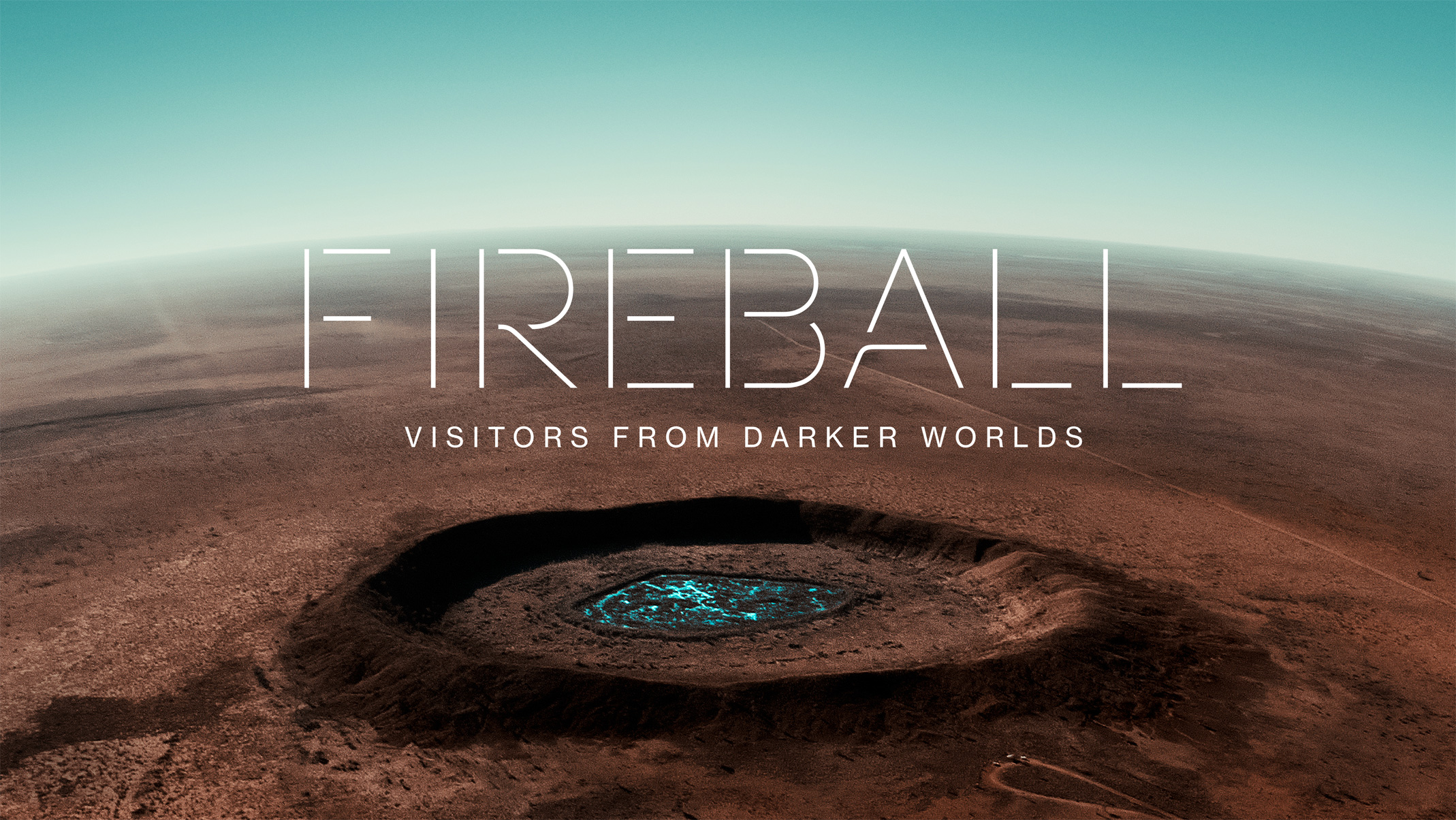 A meteor strike in Western Australia discovered only a few decades ago which houses some amazing findings both as a center for indigenous culture and deep space debris. Photo courtesy of Apple TV.
A meteor strike in Western Australia discovered only a few decades ago which houses some amazing findings both as a center for indigenous culture and deep space debris. Photo courtesy of Apple TV.
From Australia to Arizona, Mexico, Rome, Norway, even the Antarctic, space debris in all shapes and sizes have been discovered, collected, studied, stored, rinse, repeat, for decades, and even with the incredible advancements in space technology, meteorites are an inescapable reminder of just how little we know about the building blocks of life here on Earth, much less in space. Meteors are an endless source of fascination and inspiration shrouded in an arcane origin for which filmmakers Werner Herzog and Clive Oppenheimer hope to pull back the curtain as far as logic and science allow in Fireball: Visitors From Darker Worlds and give us mortals a glimpse into what researching the Heavens looks like.

Photo courtesy of Apple Insider
The film begins with an indigenous celebration of Mayan warriors playing catch with a ball on fire representing a meteor’s journey through the universe and eventually landing on earth near their civilization. From there we are taken to Western Australia where indigenous artists tell stories through their art about the importance of the massive crater near their village and how interwoven its history is with modern-day humans. From there, Mecca, where it has been discovered that the massive black stone encased in silver worshipped by Muslims throughout the world is really a visitor from outer space whose existence on Earth predates the very religion sworn to protect and uplift its significance. Throughout the movie, it is Herzon who is narrating and filming while Oppenheimer interviews experts and locals on their experiences and findings regarding star stuff and in doing so, make a formidable team.

Photo courtesy of Roger Ebert Movie Review
While seemingly fantastical findings of meteors and incredible stories of comet sightings are spread throughout Europe, such as the Eisenburg Meteorite and the cryptic museum it is housed in and the micro meteors found by Norwegian Jazz Musician Jon Larson, and the impressive private collection kept by The Vatican itself, the Antarctic is an utter treasure trove with new meteorites discovered on the regular, even by one elated Clive Oppenheimer while assisting an arctic expedition looking for such gems as sky rocks. And sky rocks they are and have been known to fall at very inconvenient times in very inconvenient places (thankfully never in the back of a Volkswagon. Kevin Smith fans will get that.) A meteorite called The Doghouse is stored safely at a research facility in Arizona, which got its name by falling through a family’s dog house in South America. Don’t worry, the dog was missed but there are still white dog hairs stuck to the rock and a portion of it even turned red from striking the painted side of the dog house. That family has a story that will top all other stories for decades to come.

Photo courtesy of Cinema Blend
Speaking of rocks dropping out of the sky, Werner and Clive spent a fair amount at the Pan-Starrs Observatory in Halleakala, Hawaii walking through with researchers how the process of detecting problematic meteors is tackled and what can be done now and in the future to protect humanity from almost certain destruction. Although it is a not if, but when scenario, these few minutes of dialog do a lot to reassure that competent people are at the helm and a reminder we need to keep the pressure up on our government to make certain facilities like Pan-Starr are always fully funded and regularly updated with the latest technology and coffee. Lots of coffee.
I won’t spoil the end but the movie itself is an obvious labor of both love and education and a borderline work of art that does take time to appreciate. It’s gracefully shot with epic, sweeping scenes, beautiful backdrops, and colorful horizons that are utterly captivating. The narration is gritty and jumps a bit from point to point (the Quasi-crystal section is a good example) with some odd jabs at dogs and film shoots from Herzog but nonetheless, this movie is a fascinating retreat that I truly recommend watching more than once in order to fully absorb all the incredible information laid out for you.

The original trailer can be seen here
For more information please visit the IMDb here

